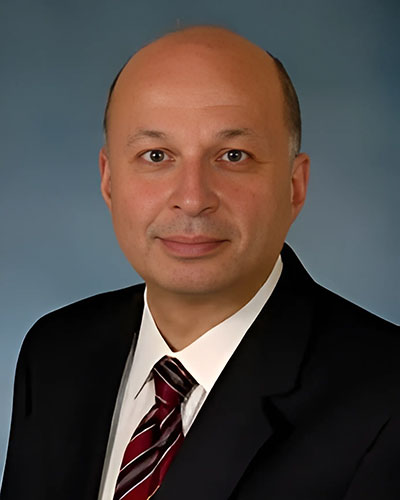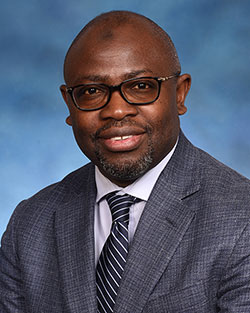October 02, 2024 | Deborah Kotz

Patients with multiple myeloma, a type of cancer in their white blood cells, have a significantly longer disease-free period and likely long-term survival if they are treated with the monoclonal antibody drug daratumumab along with the standard therapy drug lenalidomide compared to the standard therapy alone. That is the finding of a new multi-center study led by University of Maryland School of Medicine investigators and presented earlier this week at the plenary session of the International Myeloma Society Meeting in Rio de Janerio, Brazil and published online in the journal Blood.
More than 35,000 Americans are diagnosed with multiple myeloma every year, according to the American Cancer Society, and nearly 13,000 people die from it. Treatments for multiple myeloma have significantly improved with the introduction of newer chemotherapy drugs, especially in those who are newly diagnosed. However, the disease remains incurable and maintenance therapy with lenalidomide has become the standard of care providing longer remissions and an improvement in overall survival.
The trial, called AURIGA, involved 200 patients with multiple myeloma who were randomly assigned to get daratumumab along with the standard therapy or to get the standard therapy alone for up to 36 monthly treatments. At 12 months, the minimal residual disease (MRD) negative conversion rate, which indicates deeper remission and a potential for longer survival, was 51 percent in the daratumumab group compared to nearly 19 percent in the control group. After 30 months of follow-up, the patients administered daratumumab plus standard therapy were 47 percent less likely to experience disease progression or death compared to the group on lenalidomide alone.
"The significant improvement in MRD-negative conversion rates and the promising progression-free survival data suggest that this maintenance regimen has the potential to improve longer-term outcomes for patients with newly diagnosed multiple myeloma who are transplant eligible,” said Ashraf Badros, MB, ChB, principal investigator of the multi-site clinical trial and professor of medicine at UMSOM and Director of the Multiple Myeloma Service at the University of Maryland Marlene and Stewart Greenebaum Comprehensive Cancer Center (UMGCCC), which is part of the University of Maryland Medical Center. “Combining daratumumab with lenalidomide in the maintenance setting offers an advantage over lenalidomide alone for several clinically relevant subgroups that include elderly patients, those with high risk disease and high tumor burden who are newly diagnosed with multiple myeloma.”
The daratumumab regimen was associated with slightly higher incidence of side effects including low blood cell counts (cytopenias), which occurred in 54 percent of daratumumab patients compared to 47 percent in the control group. Infections occurred in 19 percent of these patients compared to 13 percent who were given the standard therapy alone. That is likely because patients remained on the daratumumab regimen for longer periods. Overall, there were no new safety concerns for this trial.

The study was funded by Janssen Biotech, Inc.
About the University of Maryland Marlene and Stewart Greenebaum Comprehensive Cancer Center
The University of Maryland Marlene and Stewart Greenebaum Comprehensive Cancer Center is a National Cancer Institute-designated comprehensive cancer center within the University of Maryland Medical Center in Baltimore, the flagship academic hospital of the University of Maryland Medical System. It offers a multidisciplinary approach to treating all types of cancer and has an active clinical and basic science research program through its relationship with the University of Maryland School of Medicine. The center is ranked among the top 50 cancer programs in the country by US News & World Report. www.umgccc.org
About the University of Maryland School of Medicine
Now in its third century, the University of Maryland School of Medicine was chartered in 1807 as the first public medical school in the United States. It continues today as one of the fastest growing, top-tier biomedical research enterprises in the world -- with 46 academic departments, centers, institutes, and programs, and a faculty of more than 3,000 physicians, scientists, and allied health professionals, including members of the National Academy of Medicine and the National Academy of Sciences, and a distinguished two-time winner of the Albert E. Lasker Award in Medical Research. With an operating budget of more than $1.2 billion, the School of Medicine works closely in partnership with the University of Maryland Medical Center and Medical System to provide research-intensive, academic and clinically based care for nearly 2 million patients each year. The School of Medicine has nearly $600 million in extramural funding, with most of its academic departments highly ranked among all medical schools in the nation in research funding. As one of the seven professional schools that make up the University of Maryland, Baltimore campus, the School of Medicine has a total population of nearly 9,000 faculty and staff, including 2,500 students, trainees, residents, and fellows. The combined School of Medicine and Medical System (“University of Maryland Medicine”) has an annual budget of over $6 billion and an economic impact of nearly $20 billion on the state and local community. The School of Medicine, which ranks as the 8th highest among public medical schools in research productivity (according to the Association of American Medical Colleges profile) is an innovator in translational medicine, with 606 active patents and 52 start-up companies. In the latestU.S. News & World Report ranking of the Best Medical Schools, published in 2023, the UM School of Medicine is ranked #10 among the 92 public medical schools in the U.S., and in the top 16 percent (#32) of all 192 public and private U.S. medical schools. The School of Medicine works locally, nationally, and globally, with research and treatment facilities in 36 countries around the world. Visit medschool.umaryland.edu
Contact
Deborah Kotz
dkotz@som.umaryland.edu
